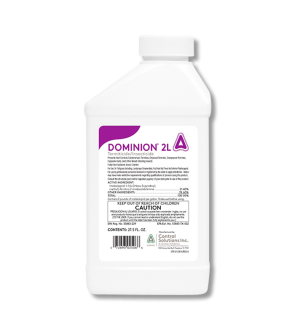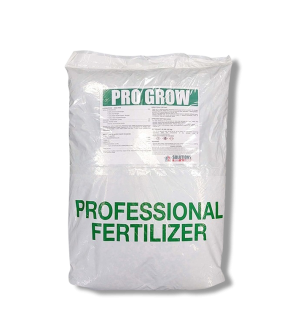How to Keep Your Lawn Green During Summer
Most Effective Products
How to Keep Your Lawn Green During the Summer
This page is a general DIY guide to help maintain a lush and healthy lawn in the summer. Using the basic, but essential lawn care products and steps listed in this article can help keep your summer turf green and healthy.
Nothing says summer is here like a deeply colored green lawn, but you notice that your turf is starting to lose its vibrant color. This can be due to multiple reasons such as fungi, diseases, broadleaf or grassy weed growth starting to occur within your lawn.
Because summer lawn consistently has warm weather and high traffic from social events it can be difficult, yet not impossible to treat. Most homeowners find it difficult to treat summer lawn due to risk of possibly burning it by applying a pesticide product in the warm temperatures. However, if you live in an area with warm-seasoned turf such as St. Augustine or bermuda these treatments are necessary during warm summer months.
In this DIY guide, you will learn the necessary steps and recommended professional products to use to keep your lawn healthy during the warmer summer months. If you have any questions, you can always email, call, or visit one of our stores to speak with a trained professional.
Identification

In order to properly care for your summer lawn you need to understand there are two classes of turf: warm-seasoned grass and cool-seasoned grasses. Each species of grass will belong in one class of grass and will vary in the time or type of pesticide products it can be treated with.
Cool-Seasoned Grasses:
If you live in the northern portion of the United States, chances are you have cool-seasoned grass. Species of cool-seasoned grasses will grow in areas where the temperatures are normally much cooler (between 65 to 75 degrees Fahrenheit).
Cool-seasoned grass should be treated in the early fall or spring if the weather is cool enough.
Common species of cool-seasoned grasses: Kentucky Bluegrass, Annual Ryegrass, Perennial Ryegrass, Fine Fescue, Tall Fescue, and Creeping Bentgrass.
Warm-Seasoned Grasses:
Warm-seasoned grasses will be found along the southern half of the United States and will grow better in warm and humid temperatures up to 90 degrees Fahrenheit.
You can treat warm-seasoned grass from the middle of February to late August if weather permits.
Common species of warm-seasoned grasses are Bahiagrass, Bermudagrass, Blend, Buffalograss, Carpetgrass.
Treatment
We recommend beginning in the early summer (second half of May to June) with a proper irrigation schedule, fertilization, mowing, grub and weed treatment as needed until August.
Make sure before mixing or applying any pesticide or insecticide product you have on protective personal equipment (PPE) that will protect your eyes, mouth, face, hands, and feet.
Step 1: Water Grass Deeply

As summer heat increases so will the amount of moisture in your turf which can cause stress and loss of color.
The best thing to do throughout the summer is to deeply water your lawn once a week with an inch of water. You will want to water in the mornings to avoid the summer heat from evaporating the water throughout the day.
If you must water your turf late in the evenings then try to do so several hours before it becomes dark. If your lawn cannot soak in the moisture before it becomes dark then this will makes your grass become susceptible to diseases.
Step 2: Fertilize Your Lawn in June

Solutions Pro Grow Summer Blend 19-4-10 Fertilizer is a granular fertilizer that is packed with essential micro-nutrients to increase the color in your turf without promoting excessive growth. This product works well in southern turfs and should be applied with a push or broadcast spreader.
To treat your lawn you will need to mow at least 1 to 2 days prior to fertilization to help the product move more easily into the soil.
To find out how much product to apply you will calculate the square footage of the treatment area. To find this, you will need to measure your treatment areas length and width in feet, and then multiply them together (length X width = square footage). For general applications, apply 5 lbs. of Solutions Pro Gro 19-4-10 Fertilizer per 1,000 sq. ft.
Once you have determine how much fertilizer to use you will load the measured amount into the spreader and begin walking in a steady pace. Walk in a straight line from the corner of your treatment area to the other until you have covered the space in the middle. After application, water your treatment area with an inch of water to activate the granular fertilizer.
For cool-seasoned grass you will want to use a slow release granular fertilizer with no more than 5% nitrogen.
Step 3: Control Grubs in June

One common lawn pest you will see throughout the summer is grubs. Grubs are the larvae of a variety of beetles that live underground in the soil beneath your grass.
Grub worms are typically active in the summer and will feed on the roots of your grass and foliage causing extensive damage to the root system. This can affect your lawns ability to absorb water and nutrients making it too weak to fend off summer heat and turf diseases which can lead to the death of your lawn.
While there are multiple reasons for your turf to become brown one easy way to identify if is grub damage is to dig a hole three inches deep in the brown patches of grass where you should see white, thick bodied grubs curled into a c-shape formation.
To treat for grubs we recommend using Dominion 2L Insecticide because as a systemic it will penetrate deep down into the soil and quickly eliminate grubs hiding in the soil.
You will need to calculate the size of your treatment area to determine how much Dominion 2L Insecticide to use. To do this, you will need to measure and multiply the length and width of the treatment area (length X width = square footage). For general applications, you will apply between 0.3 to 0.6 fl. oz. of product per 1,000 sq. ft.
Once your lawn has been evenly broadcasted with Dominion 2L Insecticide it will remain in your turf for up to 3 months fighting against grubs, and other turf insects such as aphids or termites.
Step 4: Mow and Leave Grass Clippings on Turf From June to August

In the summer your lawn is under stress from heat, moisture, and insect activity. To help reduce these stresses you can reduce the amount you cut off your lawn.
You will raise the blades on your mower at the highest setting it can go which is typically 3 to 4 inches. You will still mow once a week, but will have your mower settings adjusted to 3 or 4 inches.
After you mow your yard leave the grass clippings where they fell. Over time your grass clippings will break down and release its nutrients back into the soil providing a natural fertilization.
By leaving the grass blades as long as possible you are producing more shade thus reducing the amount of heat stress it takes.
Key Takeaways
When Should I Begin My Summer Lawn Care Schedule?
- We recommend beginning in the second half of May to first half of June before your turf start to become stressed from heat and lack of moisture. If you live in the an area with cool-seasoned grasses you will want to begin in the second half of summer (July to August) at least several weeks before ground becomes frozen.
How to Prevent Grass from Burning in Summer?
- The best time to treat your summer lawn is early in the morning to avoid high temperatures and reduce moisture evaporation. By deeply watering your turf at these times throughout the summer can help reduce the amount of stress it takes on.
How to Green Up Your Lawn Throughout Summer
- Summer lawn care begins with a proper irrigation schedule once a week. Followed by a summer fertilizer such as Solutions Pro Gro, and continuous monitoring for common summer pests like grubs. Lastly, make sure to adjust your mower height to keep your grass blades tall to provide more moisture and shade against warm temperatures.












































































































































































































































































































































































































































































































































